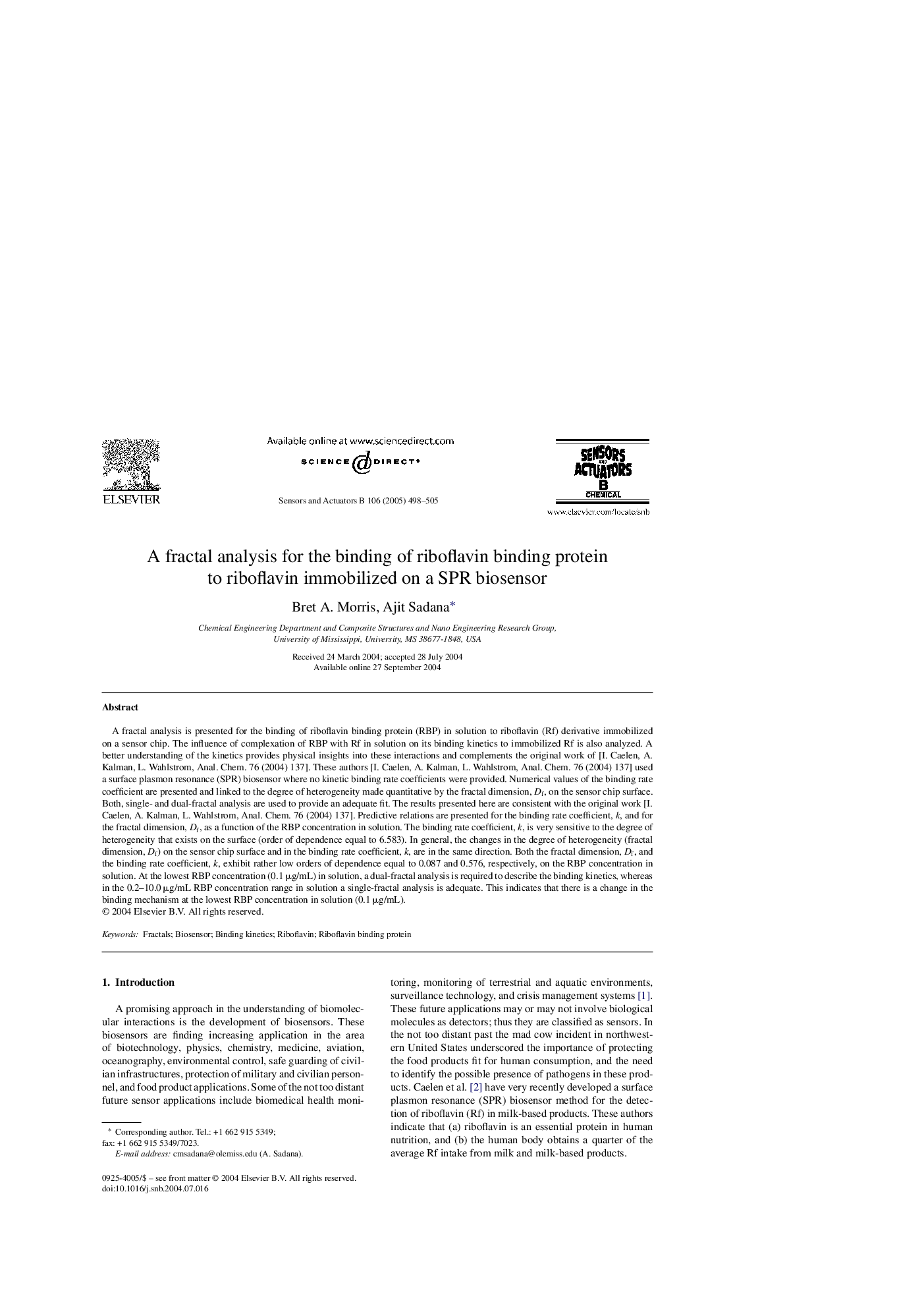| کد مقاله | کد نشریه | سال انتشار | مقاله انگلیسی | نسخه تمام متن |
|---|---|---|---|---|
| 10410949 | 894535 | 2005 | 8 صفحه PDF | دانلود رایگان |
عنوان انگلیسی مقاله ISI
A fractal analysis for the binding of riboflavin binding protein to riboflavin immobilized on a SPR biosensor
دانلود مقاله + سفارش ترجمه
دانلود مقاله ISI انگلیسی
رایگان برای ایرانیان
کلمات کلیدی
موضوعات مرتبط
مهندسی و علوم پایه
شیمی
شیمی آنالیزی یا شیمی تجزیه
پیش نمایش صفحه اول مقاله

چکیده انگلیسی
A fractal analysis is presented for the binding of riboflavin binding protein (RBP) in solution to riboflavin (Rf) derivative immobilized on a sensor chip. The influence of complexation of RBP with Rf in solution on its binding kinetics to immobilized Rf is also analyzed. A better understanding of the kinetics provides physical insights into these interactions and complements the original work of [I. Caelen, A. Kalman, L. Wahlstrom, Anal. Chem. 76 (2004) 137]. These authors [I. Caelen, A. Kalman, L. Wahlstrom, Anal. Chem. 76 (2004) 137] used a surface plasmon resonance (SPR) biosensor where no kinetic binding rate coefficients were provided. Numerical values of the binding rate coefficient are presented and linked to the degree of heterogeneity made quantitative by the fractal dimension, Df, on the sensor chip surface. Both, single- and dual-fractal analysis are used to provide an adequate fit. The results presented here are consistent with the original work [I. Caelen, A. Kalman, L. Wahlstrom, Anal. Chem. 76 (2004) 137]. Predictive relations are presented for the binding rate coefficient, k, and for the fractal dimension, Df, as a function of the RBP concentration in solution. The binding rate coefficient, k, is very sensitive to the degree of heterogeneity that exists on the surface (order of dependence equal to 6.583). In general, the changes in the degree of heterogeneity (fractal dimension, Df) on the sensor chip surface and in the binding rate coefficient, k, are in the same direction. Both the fractal dimension, Df, and the binding rate coefficient, k, exhibit rather low orders of dependence equal to 0.087 and 0.576, respectively, on the RBP concentration in solution. At the lowest RBP concentration (0.1 μg/mL) in solution, a dual-fractal analysis is required to describe the binding kinetics, whereas in the 0.2-10.0 μg/mL RBP concentration range in solution a single-fractal analysis is adequate. This indicates that there is a change in the binding mechanism at the lowest RBP concentration in solution (0.1 μg/mL).
ناشر
Database: Elsevier - ScienceDirect (ساینس دایرکت)
Journal: Sensors and Actuators B: Chemical - Volume 106, Issue 2, 13 May 2005, Pages 498-505
Journal: Sensors and Actuators B: Chemical - Volume 106, Issue 2, 13 May 2005, Pages 498-505
نویسندگان
Bret A. Morris, Ajit Sadana,